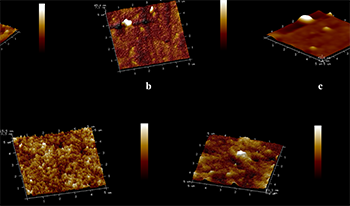
Polyacrylate latexes made from non-polymerizable emulsifiers and their inks typically suffer from poor ethanol resistance stability and low adhesion on biaxially oriented polypropylene (BOPP) and polyethylene (PE) films. In this contribution, a composite emulsifier system containing a polymerizable anionic and a polymerizable non-ionic emulsifier was used to synthesize core-shell polyacrylate latexes. Additionally, a control latex was also prepared using a traditional emulsifier TX-30 to replace the polymerizable non-ionice mulsifier in the above composite emulsifiers. The effect of the polymerizable emulsifier on ethanol resistance, Ca2+ resistance stability, and adhesion on PE and BOPP films of the latexes and the inks, and water resistance of the latex films and ink films were studied. The results show that, when compared with the control latex, the one made from double polymerizable compound emulsifier system and its ink demonstrates better ethanol resistance, higher stability of calcium ions and higher adhesion on BOPP and PE. When the ratio of anionic emulsifier to non-ionic emulsifier is 1.5/1 and the total dosage is 2.5 wt%, the latex showed the best comprehensive performance. The calcium ion resistance stability of the latex increased from 5% of the control latex to 25%. Accordingly, the adhesion of yellow ink on BOPP film increased from 92% of the ink based on the control latex to 99% and increased from 99% to 100% on PE film. The adhesion of blue ink on BOPP film increased from 92% to 99%, and from 99% to 100% on PE film. These results indicate that the fully polymerizable emulsifiers can effectively improve the properties of latex.
Yongming Chen, Xiaoyu Li, Haiqiao Wang, "Effect of Polymerizable Emulsifiers on the Properties of Polyacrylate Latexes and the Relative Waterborne Inks" in Journal of Imaging Science and Technology, 2022, pp 020404-1 - 020404-7, https://doi.org/10.2352/J.ImagingSci.Technol.2022.66.2.020404
 Find this author on Google Scholar
Find this author on Google Scholar Find this author on PubMed
Find this author on PubMed

